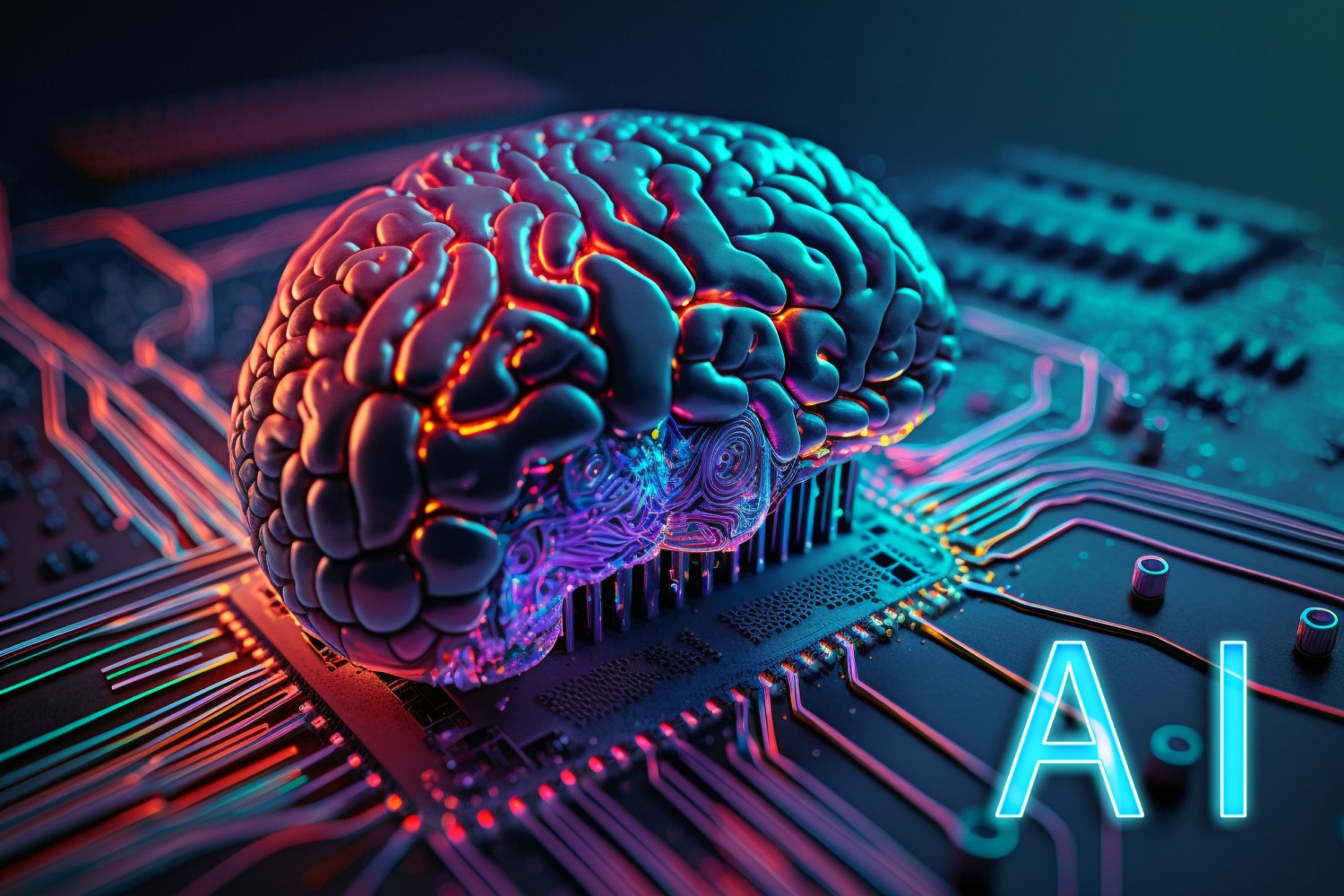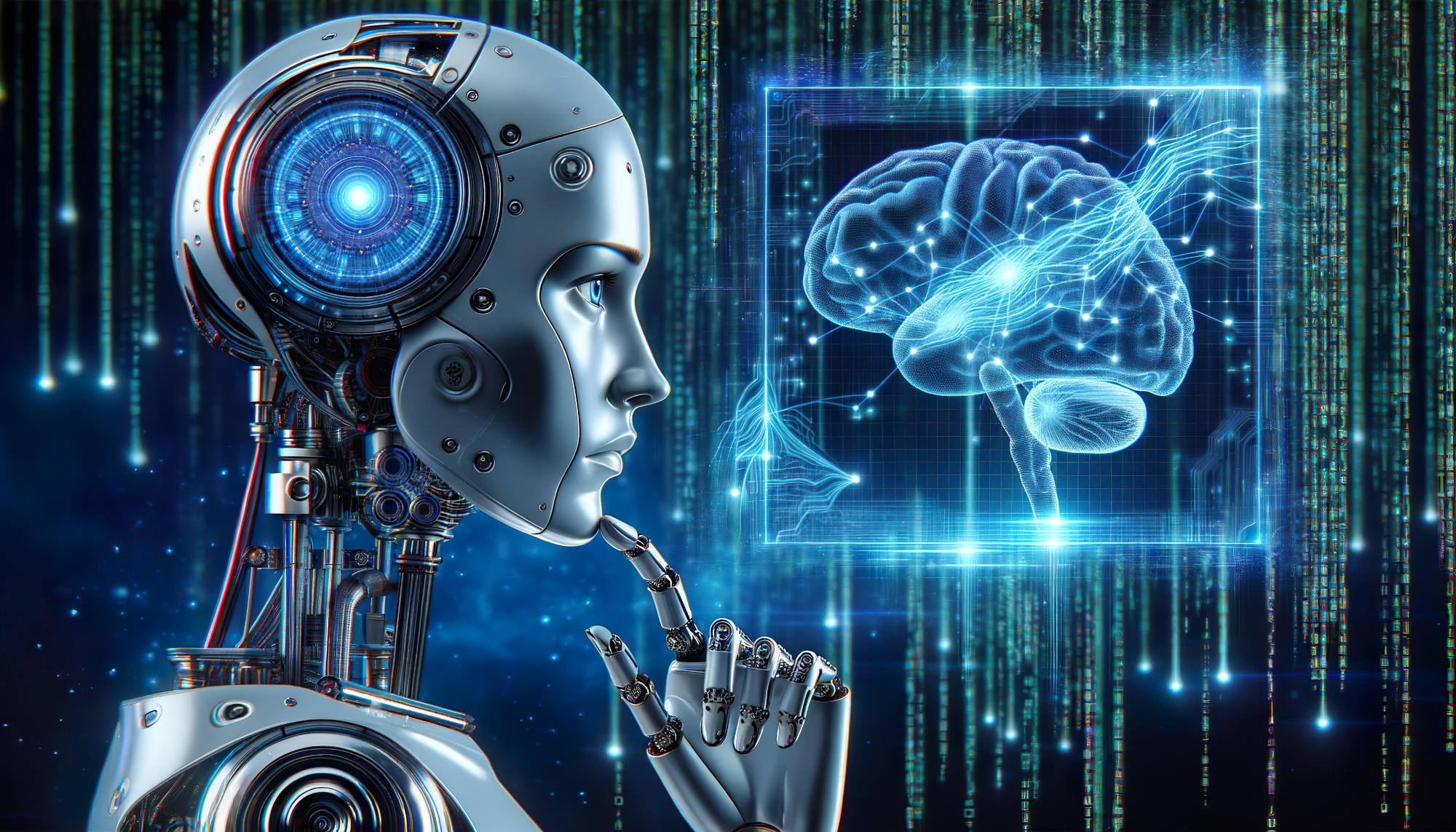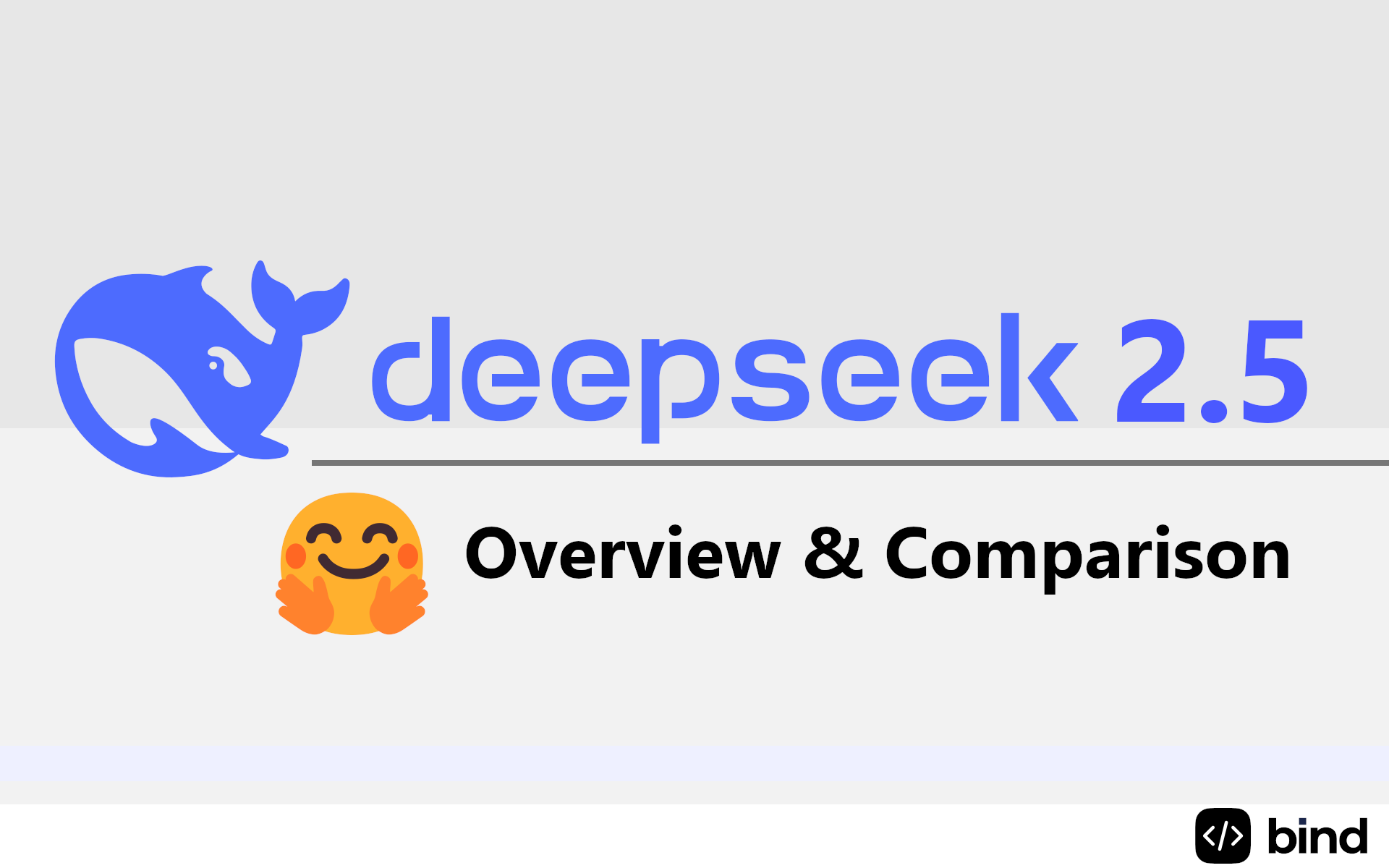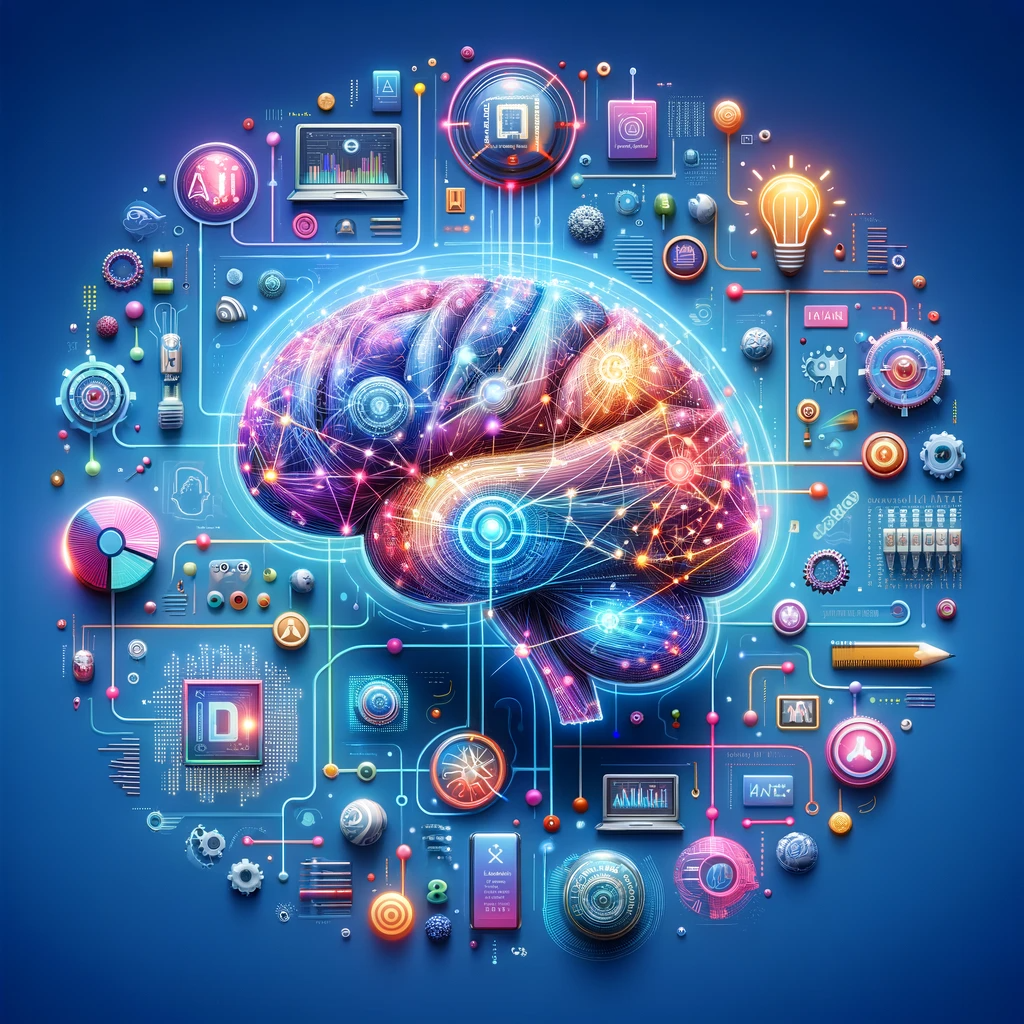
Alessiamanarapsicologa
従概要
-
設立日 31 de 5月 de 1991
-
分野 Saúde e Bem-estar
会社概要
This Stage used 3 Reward Models
DeepSeek (Chinese: 深度求索; pinyin: Shēndù Qiúsuǒ) is a Chinese expert system business that develops open-source big language models (LLMs). Based in Hangzhou, Zhejiang, it is owned and funded by Chinese hedge fund High-Flyer, whose co-founder, Liang Wenfeng, developed the business in 2023 and acts as its CEO.
The DeepSeek-R1 model offers reactions comparable to other modern big language designs, such as OpenAI’s GPT-4o and o1. [1] It is trained at a considerably lower cost-stated at US$ 6 million compared to $100 million for OpenAI’s GPT-4 in 2023 [2] -and requires a tenth of the computing power of a comparable LLM. [2] [3] [4] DeepSeek’s AI models were established in the middle of United States sanctions on India and China for Nvidia chips, [5] which were planned to restrict the ability of these 2 nations to develop innovative AI systems. [6] [7]
On 10 January 2025, DeepSeek launched its very first complimentary chatbot app, based upon the DeepSeek-R1 model, for iOS and Android; by 27 January, DeepSeek-R1 had actually exceeded ChatGPT as the most-downloaded complimentary app on the iOS App Store in the United States, [8] causing Nvidia’s share cost to drop by 18%. [9] [10] DeepSeek’s success against bigger and more established competitors has been explained as “upending AI”, [8] making up “the first chance at what is becoming an international AI area race”, [11] and ushering in “a brand-new era of AI brinkmanship”. [12]
DeepSeek makes its generative expert system algorithms, designs, and training details open-source, allowing its code to be freely available for use, adjustment, viewing, and designing documents for developing purposes. [13] The business reportedly intensely recruits young AI scientists from leading Chinese universities, [8] and hires from outside the computer science field to diversify its models’ knowledge and capabilities. [3]
In February 2016, High-Flyer was co-founded by AI enthusiast Liang Wenfeng, who had actually been trading considering that the 2007-2008 monetary crisis while attending Zhejiang University. [14] By 2019, he established High-Flyer as a hedge fund focused on establishing and utilizing AI trading algorithms. By 2021, High-Flyer exclusively used AI in trading. [15] DeepSeek has made its generative expert system chatbot open source, meaning its code is easily available for usage, modification, and watching. This includes permission to access and utilize the source code, in addition to style files, for constructing functions. [13]
According to 36Kr, Liang had developed up a store of 10,000 Nvidia A100 GPUs, which are used to train AI [16], before the United States federal government enforced AI chip constraints on China. [15]
In April 2023, High-Flyer started an artificial basic intelligence laboratory devoted to research developing AI tools different from High-Flyer’s monetary organization. [17] [18] In May 2023, with High-Flyer as one of the investors, the lab became its own company, DeepSeek. [15] [19] [18] Equity capital firms hesitated in offering financing as it was not likely that it would have the ability to create an exit in a short amount of time. [15]
After releasing DeepSeek-V2 in May 2024, which provided strong performance for a low price, DeepSeek ended up being referred to as the catalyst for China’s AI design price war. It was quickly called the “Pinduoduo of AI”, and other major tech giants such as ByteDance, Tencent, Baidu, and Alibaba started to cut the cost of their AI models to take on the business. Despite the low rate charged by DeepSeek, it paid compared to its rivals that were losing cash. [20]
DeepSeek is concentrated on research and has no in-depth strategies for commercialization; [20] this likewise permits its technology to avoid the most strict provisions of China’s AI regulations, such as requiring consumer-facing technology to adhere to the federal government’s controls on information. [3]
DeepSeek’s hiring choices target technical abilities instead of work experience, resulting in the majority of new hires being either recent university graduates or developers whose AI professions are less developed. [18] [3] Likewise, the business hires people with no computer technology background to assist its technology comprehend other topics and knowledge areas, including being able to generate poetry and carry out well on the notoriously tough Chinese college admissions tests (Gaokao). [3]
Development and release history

DeepSeek LLM

On 2 November 2023, DeepSeek released its first series of design, DeepSeek-Coder, which is offered free of charge to both scientists and business users. The code for the model was made open-source under the MIT license, with an extra license arrangement (“DeepSeek license”) regarding “open and accountable downstream usage” for the model itself. [21]
They are of the very same architecture as DeepSeek LLM detailed listed below. The series includes 8 models, 4 pretrained (Base) and 4 instruction-finetuned (Instruct). They all have 16K context lengths. The training was as follows: [22] [23] [24]
1. Pretraining: 1.8 T tokens (87% source code, 10% code-related English (GitHub markdown and Stack Exchange), and 3% code-unrelated Chinese).
2. Long-context pretraining: 200B tokens. This extends the context length from 4K to 16K. This produced the Base designs.
3. Supervised finetuning (SFT): 2B tokens of guideline information. This produced the Instruct designs.
They were trained on clusters of A100 and H800 Nvidia GPUs, connected by InfiniBand, NVLink, NVSwitch. [22]
On 29 November 2023, DeepSeek launched the DeepSeek-LLM series of models, with 7B and 67B criteria in both Base and Chat forms (no Instruct was launched). It was established to compete with other LLMs available at the time. The paper claimed benchmark results greater than the majority of open source LLMs at the time, especially Llama 2. [26]: section 5 Like DeepSeek Coder, the code for the model was under MIT license, with DeepSeek license for the model itself. [27]
The architecture was essentially the exact same as those of the Llama series. They used the pre-norm decoder-only Transformer with RMSNorm as the normalization, SwiGLU in the feedforward layers, rotary positional embedding (RoPE), and grouped-query attention (GQA). Both had vocabulary size 102,400 (byte-level BPE) and context length of 4096. They trained on 2 trillion tokens of English and Chinese text gotten by deduplicating the Common Crawl. [26]
The Chat versions of the 2 Base models was also launched simultaneously, acquired by training Base by supervised finetuning (SFT) followed by direct policy optimization (DPO). [26]
On 9 January 2024, they released 2 DeepSeek-MoE models (Base, Chat), each of 16B parameters (2.7 B activated per token, 4K context length). The training was essentially the like DeepSeek-LLM 7B, and was trained on a part of its training dataset. They declared similar efficiency with a 16B MoE as a 7B non-MoE. In architecture, it is a variation of the basic sparsely-gated MoE, with “shared professionals” that are always queried, and “routed experts” that might not be. They found this to assist with professional balancing. In standard MoE, some specialists can end up being extremely counted on, while other experts might be seldom used, losing parameters. Attempting to balance the specialists so that they are similarly used then triggers professionals to replicate the exact same capacity. They proposed the shared professionals to discover core capacities that are frequently utilized, and let the routed experts to learn the peripheral capabilities that are hardly ever used. [28]
In April 2024, they released 3 DeepSeek-Math designs specialized for doing mathematics: Base, Instruct, RL. It was trained as follows: [29]
1. Initialize with a previously pretrained DeepSeek-Coder-Base-v1.5 7B.
2. Further pretrain with 500B tokens (6% DeepSeekMath Corpus, 4% AlgebraicStack, 10% arXiv, 20% GitHub code, 10% Common Crawl). This produced the Base model.
3. Train an instruction-following model by SFT Base with 776K math issues and their tool-use-integrated step-by-step solutions. This produced the Instruct model.
Reinforcement knowing (RL): The reward design was a procedure benefit design (PRM) trained from Base according to the Math-Shepherd technique. [30] This benefit design was then utilized to train Instruct utilizing group relative policy optimization (GRPO) on a dataset of 144K math questions “associated to GSM8K and MATH”. The reward model was continuously upgraded throughout training to prevent reward hacking. This resulted in the RL model.
V2

In May 2024, they launched the DeepSeek-V2 series. The series consists of 4 models, 2 base designs (DeepSeek-V2, DeepSeek-V2-Lite) and 2 chatbots (-Chat). The 2 bigger models were trained as follows: [31]
1. Pretrain on a dataset of 8.1 T tokens, where Chinese tokens are 12% more than English ones.
2. Extend context length from 4K to 128K using YaRN. [32] This resulted in DeepSeek-V2.
3. SFT with 1.2 M circumstances for helpfulness and 0.3 M for security. This led to DeepSeek-V2-Chat (SFT) which was not launched.
4. RL utilizing GRPO in two phases. The very first stage was trained to solve math and coding issues. This phase utilized 1 benefit model, trained on compiler feedback (for coding) and ground-truth labels (for mathematics). The 2nd phase was trained to be useful, safe, and follow rules. This stage utilized 3 reward models. The helpfulness and security benefit models were trained on human choice information. The rule-based reward model was by hand configured. All trained reward models were initialized from DeepSeek-V2-Chat (SFT). This led to the released version of DeepSeek-V2-Chat.
They decided for 2-staged RL, since they found that RL on reasoning data had “special qualities” different from RL on basic information. For example, RL on thinking could enhance over more training actions. [31]
The two V2-Lite designs were smaller, and skilled similarly, though DeepSeek-V2-Lite-Chat only went through SFT, not RL. They trained the Lite variation to assist “additional research study and advancement on MLA and DeepSeekMoE”. [31]
Architecturally, the V2 models were considerably modified from the DeepSeek LLM series. They altered the standard attention system by a low-rank approximation called multi-head hidden attention (MLA), and utilized the mix of professionals (MoE) variant previously released in January. [28]
The Financial Times reported that it was less expensive than its peers with a rate of 2 RMB for every million output tokens. The University of Waterloo Tiger Lab’s leaderboard ranked DeepSeek-V2 seventh on its LLM ranking. [19]
In June 2024, they released 4 models in the DeepSeek-Coder-V2 series: V2-Base, V2-Lite-Base, V2-Instruct, V2-Lite-Instruct. They were trained as follows: [35] [note 2]
1. The Base designs were initialized from corresponding intermediate checkpoints after pretraining on 4.2 T tokens (not the variation at the end of pretraining), then pretrained even more for 6T tokens, then context-extended to 128K context length. This produced the Base models.
DeepSeek-Coder and DeepSeek-Math were utilized to create 20K code-related and 30K math-related direction data, then integrated with a direction dataset of 300M tokens. This was utilized for SFT.
2. RL with GRPO. The benefit for math issues was calculated by comparing to the ground-truth label. The reward for code issues was generated by a benefit design trained to anticipate whether a program would pass the unit tests.
DeepSeek-V2.5 was released in September and upgraded in December 2024. It was made by integrating DeepSeek-V2-Chat and DeepSeek-Coder-V2-Instruct. [36]
V3

In December 2024, they released a base design DeepSeek-V3-Base and a chat design DeepSeek-V3. The design architecture is essentially the same as V2. They were trained as follows: [37]
1. Pretraining on 14.8 T tokens of a multilingual corpus, primarily English and Chinese. It contained a higher ratio of math and shows than the pretraining dataset of V2.
2. Extend context length twice, from 4K to 32K and after that to 128K, utilizing YaRN. [32] This produced DeepSeek-V3-Base.
3. SFT for 2 epochs on 1.5 M samples of thinking (mathematics, shows, logic) and non-reasoning (innovative writing, roleplay, basic question answering) information. Reasoning data was generated by “expert designs”. Non-reasoning data was created by DeepSeek-V2.5 and inspected by human beings. – The “professional designs” were trained by starting with an unspecified base model, then SFT on both information, and synthetic data created by an internal DeepSeek-R1 model. The system prompt asked the R1 to reflect and verify during thinking. Then the specialist designs were RL using an unspecified reward function.
– Each specialist model was trained to produce simply synthetic thinking data in one particular domain (math, programming, logic).
– Expert models were used, instead of R1 itself, given that the output from R1 itself suffered “overthinking, poor format, and extreme length”.

4. Model-based benefit models were made by starting with a SFT checkpoint of V3, then finetuning on human preference information containing both last benefit and chain-of-thought causing the final reward. The benefit model produced reward signals for both questions with objective however free-form responses, and concerns without objective answers (such as innovative writing).
5. A SFT checkpoint of V3 was trained by GRPO using both reward designs and rule-based benefit. The rule-based benefit was calculated for mathematics problems with a final response (put in a box), and for programming problems by unit tests. This produced DeepSeek-V3.
The DeepSeek team performed comprehensive low-level engineering to achieve efficiency. They utilized mixed-precision arithmetic. Much of the forward pass was performed in 8-bit floating point numbers (5E2M: 5-bit exponent and 2-bit mantissa) instead of the basic 32-bit, requiring unique GEMM routines to collect properly. They utilized a custom 12-bit float (E5M6) for just the inputs to the direct layers after the attention modules. Optimizer states were in 16-bit (BF16). They decreased the communication latency by overlapping extensively computation and interaction, such as committing 20 streaming multiprocessors out of 132 per H800 for just inter-GPU communication. They reduced communication by rearranging (every 10 minutes) the precise device each specialist was on in order to prevent specific devices being queried more typically than the others, including auxiliary load-balancing losses to the training loss function, and other load-balancing techniques. [37]
After training, it was released on H800 clusters. The H800 cards within a cluster are linked by NVLink, and the clusters are connected by InfiniBand. [37]
Benchmark tests show that DeepSeek-V3 exceeded Llama 3.1 and Qwen 2.5 whilst matching GPT-4o and Claude 3.5 Sonnet. [18] [39] [40] [41]
R1
On 20 November 2024, DeepSeek-R1-Lite-Preview became accessible via DeepSeek’s API, as well as via a chat interface after visiting. [42] [43] [note 3] It was trained for logical inference, mathematical reasoning, and real-time analytical. DeepSeek claimed that it went beyond efficiency of OpenAI o1 on standards such as American Invitational Mathematics Examination (AIME) and MATH. [44] However, The Wall Street Journal stated when it utilized 15 issues from the 2024 edition of AIME, the o1 design reached a service quicker than DeepSeek-R1-Lite-Preview. [45]
On 20 January 2025, DeepSeek launched DeepSeek-R1 and DeepSeek-R1-Zero. [46] Both were initialized from DeepSeek-V3-Base, and share its architecture. The company likewise released some “DeepSeek-R1-Distill” designs, which are not initialized on V3-Base, but instead are initialized from other pretrained open-weight designs, consisting of LLaMA and Qwen, then fine-tuned on artificial data created by R1. [47]
A discussion in between User and Assistant. The user asks a concern, and the Assistant fixes it. The assistant initially considers the thinking procedure in the mind and after that supplies the user with the response. The reasoning procedure and response are enclosed within and tags, respectively, i.e., reasoning procedure here respond to here. User:. Assistant:
DeepSeek-R1-Zero was trained exclusively utilizing GRPO RL without SFT. Unlike previous variations, they utilized no model-based benefit. All benefit functions were rule-based, “primarily” of 2 types (other types were not specified): precision benefits and format rewards. Accuracy reward was examining whether a boxed answer is correct (for mathematics) or whether a code passes tests (for programming). Format benefit was checking whether the model puts its thinking trace within … [47]
As R1-Zero has problems with readability and blending languages, R1 was trained to deal with these problems and further improve reasoning: [47]
1. SFT DeepSeek-V3-Base on “thousands” of “cold-start” data all with the basic format of|special_token|| special_token|summary >.
2. Apply the exact same RL procedure as R1-Zero, however likewise with a “language consistency reward” to motivate it to react monolingually. This produced an internal design not released.
3. Synthesize 600K thinking data from the internal model, with rejection tasting (i.e. if the created reasoning had an incorrect last answer, then it is eliminated). Synthesize 200K non-reasoning data (writing, accurate QA, self-cognition, translation) utilizing DeepSeek-V3.
4. SFT DeepSeek-V3-Base on the 800K artificial data for 2 epochs.
5. GRPO RL with rule-based benefit (for reasoning jobs) and model-based reward (for non-reasoning jobs, helpfulness, and harmlessness). This produced DeepSeek-R1.
Distilled designs were trained by SFT on 800K data synthesized from DeepSeek-R1, in a similar way as step 3 above. They were not trained with RL. [47]
Assessment and reactions
DeepSeek launched its AI Assistant, which uses the V3 model as a chatbot app for Apple IOS and Android. By 27 January 2025 the app had actually surpassed ChatGPT as the highest-rated free app on the iOS App Store in the United States; its chatbot supposedly answers questions, solves logic problems and writes computer programs on par with other chatbots on the market, according to benchmark tests utilized by American AI companies. [3]
DeepSeek-V3 utilizes considerably less resources compared to its peers; for instance, whereas the world’s leading AI companies train their chatbots with supercomputers utilizing as numerous as 16,000 graphics processing units (GPUs), if not more, DeepSeek declares to require only about 2,000 GPUs, particularly the H800 series chip from Nvidia. [37] It was trained in around 55 days at a cost of US$ 5.58 million, [37] which is approximately one tenth of what United States tech giant Meta spent developing its newest AI technology. [3]
DeepSeek’s competitive performance at fairly very little cost has actually been acknowledged as possibly challenging the worldwide supremacy of American AI designs. [48] Various publications and news media, such as The Hill and The Guardian, described the release of its chatbot as a “Sputnik moment” for American AI. [49] [50] The performance of its R1 model was supposedly “on par with” among OpenAI’s most current designs when utilized for tasks such as mathematics, coding, and natural language thinking; [51] echoing other analysts, American Silicon Valley endeavor capitalist Marc Andreessen similarly explained R1 as “AI’s Sputnik moment”. [51]
DeepSeek’s creator, Liang Wenfeng has actually been compared to Open AI CEO Sam Altman, with CNN calling him the Sam Altman of China and an evangelist for AI. [52] Chinese state media extensively applauded DeepSeek as a nationwide property. [53] [54] On 20 January 2025, China’s Premier Li Qiang welcomed Liang Wenfeng to his symposium with experts and asked him to supply opinions and tips on a draft for remarks of the annual 2024 federal government work report. [55]
DeepSeek’s optimization of limited resources has highlighted possible limits of United States sanctions on China’s AI advancement, that include export limitations on innovative AI chips to China [18] [56] The success of the business’s AI designs subsequently “triggered market chaos” [57] and triggered shares in major worldwide technology business to plunge on 27 January 2025: Nvidia’s stock fell by as much as 17-18%, [58] as did the stock of competing Broadcom. Other tech firms also sank, including Microsoft (down 2.5%), Google’s owner Alphabet (down over 4%), and Dutch chip equipment maker ASML (down over 7%). [51] A global selloff of innovation stocks on Nasdaq, triggered by the release of the R1 model, had caused tape losses of about $593 billion in the market capitalizations of AI and hardware business; [59] by 28 January 2025, an overall of $1 trillion of worth was wiped off American stocks. [50]
Leading figures in the American AI sector had combined responses to DeepSeek’s success and efficiency. [60] Microsoft CEO Satya Nadella and OpenAI CEO Sam Altman-whose business are associated with the United States government-backed “Stargate Project” to develop American AI infrastructure-both called DeepSeek “extremely impressive”. [61] [62] American President Donald Trump, who revealed The Stargate Project, called DeepSeek a wake-up call [63] and a positive development. [64] [50] [51] [65] Other leaders in the field, including Scale AI CEO Alexandr Wang, Anthropic cofounder and CEO Dario Amodei, and Elon Musk revealed suspicion of the app’s performance or of the sustainability of its success. [60] [66] [67] Various business, consisting of Amazon Web Services, Toyota, and Stripe, are looking for to utilize the design in their program. [68]
On 27 January 2025, DeepSeek restricted its new user registration to contact number from mainland China, e-mail addresses, or Google account logins, following a “massive” cyberattack disrupted the appropriate performance of its servers. [69] [70]
Some sources have observed that the main application programming user interface (API) variation of R1, which runs from servers located in China, uses censorship systems for subjects that are considered politically delicate for the government of China. For example, the model refuses to answer questions about the 1989 Tiananmen Square demonstrations and massacre, persecution of Uyghurs, contrasts in between Xi Jinping and Winnie the Pooh, or human rights in China. [71] [72] [73] The AI may initially create a response, but then erases it quickly afterwards and replaces it with a message such as: “Sorry, that’s beyond my present scope. Let’s speak about something else.” [72] The incorporated censorship mechanisms and constraints can just be gotten rid of to a minimal extent in the open-source variation of the R1 model. If the “core socialist values” defined by the Chinese Internet regulatory authorities are touched upon, or the political status of Taiwan is raised, discussions are ended. [74] When evaluated by NBC News, DeepSeek’s R1 described Taiwan as “an inalienable part of China’s area,” and stated: “We securely oppose any form of ‘Taiwan independence’ separatist activities and are dedicated to achieving the complete reunification of the motherland through serene ways.” [75] In January 2025, Western scientists were able to trick DeepSeek into giving specific responses to some of these subjects by requesting in its answer to swap specific letters for similar-looking numbers. [73]
Security and privacy
Some professionals fear that the federal government of China could utilize the AI system for foreign impact operations, spreading out disinformation, surveillance and the development of cyberweapons. [76] [77] [78] DeepSeek’s personal privacy conditions state “We keep the info we collect in secure servers located in individuals’s Republic of China … We may gather your text or audio input, timely, uploaded files, feedback, chat history, or other material that you supply to our design and Services”. Although the data storage and collection policy is constant with ChatGPT’s privacy policy, [79] a Wired short article reports this as security concerns. [80] In action, the Italian information protection authority is seeking additional info on DeepSeek’s collection and use of individual information, and the United States National Security Council revealed that it had actually started a nationwide security review. [81] [82] Taiwan’s federal government banned using DeepSeek at government ministries on security grounds and South Korea’s Personal Information Protection Commission opened a questions into DeepSeek’s use of personal info. [83]
Artificial intelligence industry in China.
Notes

^ a b c The variety of heads does not equivalent the number of KV heads, due to GQA.
^ Inexplicably, the design called DeepSeek-Coder-V2 Chat in the paper was released as DeepSeek-Coder-V2-Instruct in HuggingFace.
^ At that time, the R1-Lite-Preview required picking “Deep Think enabled”, and every user could use it only 50 times a day.
References
^ Gibney, Elizabeth (23 January 2025). “China’s cheap, open AI design DeepSeek delights scientists”. Nature. doi:10.1038/ d41586-025-00229-6. ISSN 1476-4687. PMID 39849139.
^ a b Vincent, James (28 January 2025). “The DeepSeek panic exposes an AI world prepared to blow”. The Guardian.
^ a b c d e f g Metz, Cade; Tobin, Meaghan (23 January 2025). “How Chinese A.I. Start-Up DeepSeek Is Taking On Silicon Valley Giants”. The New York Times. ISSN 0362-4331. Retrieved 27 January 2025.
^ Cosgrove, Emma (27 January 2025). “DeepSeek’s less expensive designs and weaker chips call into question trillions in AI facilities spending”. Business Insider.
^ Mallick, Subhrojit (16 January 2024). “Biden admin’s cap on GPU exports might hit India’s AI aspirations”. The Economic Times. Retrieved 29 January 2025.
^ Saran, Cliff (10 December 2024). “Nvidia investigation signals widening of US and China chip war|Computer Weekly”. Computer Weekly. Retrieved 27 January 2025.
^ Sherman, Natalie (9 December 2024). “Nvidia targeted by China in new chip war probe”. BBC. Retrieved 27 January 2025.
^ a b c Metz, Cade (27 January 2025). “What is DeepSeek? And How Is It Upending A.I.?”. The New York Times. ISSN 0362-4331. Retrieved 27 January 2025.
^ Field, Hayden (27 January 2025). “China’s DeepSeek AI dethrones ChatGPT on App Store: Here’s what you should know”. CNBC.
^ Picchi, Aimee (27 January 2025). “What is DeepSeek, and why is it causing Nvidia and other stocks to slump?”. CBS News.
^ Zahn, Max (27 January 2025). “Nvidia, Microsoft shares tumble as China-based AI app DeepSeek hammers tech giants”. ABC News. Retrieved 27 January 2025.
^ Roose, Kevin (28 January 2025). “Why DeepSeek Could Change What Silicon Valley Believe About A.I.” The New York City Times. ISSN 0362-4331. Retrieved 28 January 2025.
^ a b Romero, Luis E. (28 January 2025). “ChatGPT, DeepSeek, Or Llama? Meta’s LeCun Says Open-Source Is The Key”. Forbes.
^ Chen, Caiwei (24 January 2025). “How a top Chinese AI model overcame US sanctions”. MIT Technology Review. Archived from the original on 25 January 2025. Retrieved 25 January 2025.
^ a b c d Ottinger, Lily (9 December 2024). “Deepseek: From Hedge Fund to Frontier Model Maker”. ChinaTalk. Archived from the initial on 28 December 2024. Retrieved 28 December 2024.
^ Leswing, Kif (23 February 2023). “Meet the $10,000 Nvidia chip powering the race for A.I.” CNBC. Retrieved 30 January 2025.
^ Yu, Xu (17 April 2023).” [Exclusive] Chinese Quant Hedge Fund High-Flyer Won’t Use AGI to Trade Stocks, MD Says”. Yicai Global. Archived from the original on 31 December 2023. Retrieved 28 December 2024.
^ a b c d e Jiang, Ben; Perezi, Bien (1 January 2025). “Meet DeepSeek: the Chinese start-up that is changing how AI designs are trained”. South China Morning Post. Archived from the initial on 22 January 2025. Retrieved 1 January 2025.
^ a b McMorrow, Ryan; Olcott, Eleanor (9 June 2024). “The Chinese quant fund-turned-AI pioneer”. Financial Times. Archived from the original on 17 July 2024. Retrieved 28 December 2024.
^ a b Schneider, Jordan (27 November 2024). “Deepseek: The Quiet Giant Leading China’s AI Race”. ChinaTalk. Retrieved 28 December 2024.
^ “DeepSeek-Coder/LICENSE-MODEL at primary · deepseek-ai/DeepSeek-Coder”. GitHub. Archived from the original on 22 January 2025. Retrieved 24 January 2025.
^ a b c Guo, Daya; Zhu, Qihao; Yang, Dejian; Xie, Zhenda; Dong, Kai; Zhang, Wentao; Chen, Guanting; Bi, Xiao; Wu, Y. (26 January 2024), DeepSeek-Coder: When the Large Language Model Meets Programming – The Rise of Code Intelligence, arXiv:2401.14196.
^ “DeepSeek Coder”. deepseekcoder.github.io. Retrieved 27 January 2025.
^ deepseek-ai/DeepSeek-Coder, DeepSeek, 27 January 2025, retrieved 27 January 2025.
^ “deepseek-ai/deepseek-coder -5.7 bmqa-base · Hugging Face”. huggingface.co. Retrieved 27 January 2025.
^ a b c d DeepSeek-AI; Bi, Xiao; Chen, Deli; Chen, Guanting; Chen, Shanhuang; Dai, Damai; Deng, Chengqi; Ding, Honghui; Dong, Kai (5 January 2024), DeepSeek LLM: Scaling Open-Source Language Models with Longtermism, arXiv:2401.02954.
^ deepseek-ai/DeepSeek-LLM, DeepSeek, 27 January 2025, recovered 27 January 2025.
^ a b Dai, Damai; Deng, Chengqi; Zhao, Chenggang; Xu, R. X.; Gao, Huazuo; Chen, Deli; Li, Jiashi; Zeng, Wangding; Yu, Xingkai (11 January 2024), DeepSeekMoE: Towards Ultimate Expert Specialization in Mixture-of-Experts Language Models, arXiv:2401.06066.
^ Shao, Zhihong; Wang, Peiyi; Zhu, Qihao; Xu, Runxin; Song, Junxiao; Bi, Xiao; Zhang, Haowei; Zhang, Mingchuan; Li, Y. K. (27 April 2024), DeepSeekMath: Pushing the Limits of Mathematical Reasoning in Open Language Models, arXiv:2402.03300.
^ Wang, Peiyi; Li, Lei; Shao, Zhihong; Xu, R. X.; Dai, Damai; Li, Yifei; Chen, Deli; Wu, Y.; Sui, Zhifang (19 February 2024), Math-Shepherd: Verify and Reinforce LLMs Step-by-step without Human Annotations, arXiv:2312.08935. ^ a b c d DeepSeek-AI; Liu, Aixin; Feng, Bei; Wang, Bin; Wang, Bingxuan; Liu, Bo; Zhao, Chenggang; Dengr, Chengqi; Ruan, Chong (19 June 2024), DeepSeek-V2: A Strong, Economical, and Efficient Mixture-of-Experts Language Model, arXiv:2405.04434.
^ a b Peng, Bowen; Quesnelle, Jeffrey; Fan, Honglu; Shippole, Enrico (1 November 2023), YaRN: Efficient Context Window Extension of Large Language Models, arXiv:2309.00071.
^ “config.json · deepseek-ai/DeepSeek-V 2-Lite at main”. huggingface.co. 15 May 2024. Retrieved 28 January 2025.
^ “config.json · deepseek-ai/DeepSeek-V 2 at primary”. huggingface.co. 6 May 2024. Retrieved 28 January 2025.
^ DeepSeek-AI; Zhu, Qihao; Guo, Daya; Shao, Zhihong; Yang, Dejian; Wang, Peiyi; Xu, Runxin; Wu, Y.; Li, Yukun (17 June 2024), DeepSeek-Coder-V2: the Barrier of Closed-Source Models in Code Intelligence, arXiv:2406.11931.
^ “deepseek-ai/DeepSeek-V 2.5 · Hugging Face”. huggingface.co. 3 January 2025. Retrieved 28 January 2025.
^ a b c d e f g DeepSeek-AI; Liu, Aixin; Feng, Bei; Xue, Bing; Wang, Bingxuan; Wu, Bochao; Lu, Chengda; Zhao, Chenggang; Deng, Chengqi (27 December 2024), DeepSeek-V3 Technical Report, arXiv:2412.19437.
^ “config.json · deepseek-ai/DeepSeek-V 3 at primary”. huggingface.co. 26 December 2024. Retrieved 28 January 2025.
^ Jiang, Ben (27 December 2024). “Chinese start-up DeepSeek’s brand-new AI design outshines Meta, OpenAI items”. South China Morning Post. Archived from the initial on 27 December 2024. Retrieved 28 December 2024.
^ Sharma, Shubham (26 December 2024). “DeepSeek-V3, ultra-large open-source AI, surpasses Llama and Qwen on launch”. VentureBeat. Archived from the original on 27 December 2024. Retrieved 28 December 2024.
^ Wiggers, Kyle (26 December 2024). “DeepSeek’s new AI model appears to be one of the finest ‘open’ oppositions yet”. TechCrunch. Archived from the initial on 2 January 2025. Retrieved 31 December 2024.
^ “Deepseek Log in page”. DeepSeek. Retrieved 30 January 2025.
^ “News|DeepSeek-R1-Lite Release 2024/11/20: DeepSeek-R1-Lite-Preview is now live: unleashing supercharged thinking power!”. DeepSeek API Docs. Archived from the initial on 20 November 2024. Retrieved 28 January 2025.
^ Franzen, Carl (20 November 2024). “DeepSeek’s very first thinking model R1-Lite-Preview turns heads, beating OpenAI o1 efficiency”. VentureBeat. Archived from the initial on 22 November 2024. Retrieved 28 December 2024.
^ Huang, Raffaele (24 December 2024). “Don’t Look Now, but China’s AI Is Catching Up Fast”. The Wall Street Journal. Archived from the initial on 27 December 2024. Retrieved 28 December 2024.
^ “Release DeepSeek-R1 · deepseek-ai/DeepSeek-R1@23807ce”. GitHub. Archived from the initial on 21 January 2025. Retrieved 21 January 2025.
^ a b c d DeepSeek-AI; Guo, Daya; Yang, Dejian; Zhang, Haowei; Song, Junxiao; Zhang, Ruoyu; Xu, Runxin; Zhu, Qihao; Ma, Shirong (22 January 2025), DeepSeek-R1: Incentivizing Reasoning Capability in LLMs by means of Reinforcement Learning, arXiv:2501.12948.
^ “Chinese AI startup DeepSeek overtakes ChatGPT on Apple App Store”. Reuters. 27 January 2025. Retrieved 27 January 2025.
^ Wade, David (6 December 2024). “American AI has reached its Sputnik moment”. The Hill. Archived from the initial on 8 December 2024. Retrieved 25 January 2025.
^ a b c Milmo, Dan; Hawkins, Amy; Booth, Robert; Kollewe, Julia (28 January 2025). “‘ Sputnik minute’: $1tn cleaned off US stocks after Chinese company reveals AI chatbot” – by means of The Guardian.
^ a b c d Hoskins, Peter; Rahman-Jones, Imran (27 January 2025). “Nvidia shares sink as Chinese AI app spooks markets”. BBC. Retrieved 28 January 2025.
^ Goldman, David (27 January 2025). “What is DeepSeek, the Chinese AI start-up that shook the tech world?|CNN Business”. CNN. Retrieved 29 January 2025.
^ “DeepSeek presents a challenge to Beijing as much as to Silicon Valley”. The Economist. 29 January 2025. ISSN 0013-0613. Retrieved 31 January 2025.
^ Paul, Katie; Nellis, Stephen (30 January 2025). “Chinese state-linked accounts hyped DeepSeek AI launch ahead of US stock rout, Graphika states”. Reuters. Retrieved 30 January 2025.
^ 澎湃新闻 (22 January 2025). “量化巨头幻方创始人梁文锋参加总理座谈会并发言 , 他还创办了” AI界拼多多””. finance.sina.com.cn. Retrieved 31 January 2025.
^ Shilov, Anton (27 December 2024). “Chinese AI company’s AI design advancement highlights limits of US sanctions”. Tom’s Hardware. Archived from the initial on 28 December 2024. Retrieved 28 December 2024.
^ “DeepSeek updates – Chinese AI chatbot triggers US market chaos, wiping $500bn off Nvidia”. BBC News. Retrieved 27 January 2025.
^ Nazareth, Rita (26 January 2025). “Stock Rout Gets Ugly as Nvidia Extends Loss to 17%: Markets Wrap”. Bloomberg. Retrieved 27 January 2025.
^ Carew, Sinéad; Cooper, Amanda; Banerjee, Ankur (27 January 2025). “DeepSeek triggers international AI selloff, Nvidia losses about $593 billion of value”. Reuters.
^ a b Sherry, Ben (28 January 2025). “DeepSeek, Calling It ‘Impressive’ but Staying Skeptical”. Inc. Retrieved 29 January 2025.
^ Okemwa, Kevin (28 January 2025). “Microsoft CEO Satya Nadella promotes DeepSeek’s open-source AI as “very impressive”: “We need to take the advancements out of China really, extremely seriously””. Windows Central. Retrieved 28 January 2025.
^ Nazzaro, Miranda (28 January 2025). “OpenAI’s Sam Altman calls DeepSeek model ‘remarkable'”. The Hill. Retrieved 28 January 2025.
^ Dou, Eva; Gregg, Aaron; Zakrzewski, Cat; Tiku, Nitasha; Najmabadi, Shannon (28 January 2025). “Trump calls China’s DeepSeek AI app a ‘wake-up call’ after tech stocks slide”. The Washington Post. Retrieved 28 January 2025.
^ Habeshian, Sareen (28 January 2025). “Johnson slams China on AI, Trump calls DeepSeek advancement “favorable””. Axios.
^ Karaian, Jason; Rennison, Joe (27 January 2025). “China’s A.I. Advances Spook Big Tech Investors on Wall Street” – via NYTimes.com.
^ Sharma, Manoj (6 January 2025). “Musk dismisses, Altman applauds: What leaders state on DeepSeek’s interruption”. Fortune India. Retrieved 28 January 2025.
^ “Elon Musk ‘questions’ DeepSeek’s claims, recommends huge Nvidia GPU infrastructure”. Financialexpress. 28 January 2025. Retrieved 28 January 2025.
^ Kim, Eugene. “Big AWS customers, including Stripe and Toyota, are pestering the cloud giant for access to DeepSeek AI designs”. Business Insider.
^ Kerr, Dara (27 January 2025). “DeepSeek hit with ‘large-scale’ cyber-attack after AI chatbot tops app shops”. The Guardian. Retrieved 28 January 2025.
^ Tweedie, Steven; Altchek, Ana. “DeepSeek momentarily limited brand-new sign-ups, mentioning ‘large-scale malicious attacks'”. Business Insider.
^ Field, Matthew; Titcomb, James (27 January 2025). “Chinese AI has stimulated a $1 trillion panic – and it doesn’t care about totally free speech”. The Daily Telegraph. ISSN 0307-1235. Retrieved 27 January 2025.
^ a b Steinschaden, Jakob (27 January 2025). “DeepSeek: This is what live censorship looks like in the Chinese AI chatbot”. Trending Topics. Retrieved 27 January 2025.
^ a b Lu, Donna (28 January 2025). “We experimented with DeepSeek. It worked well, up until we asked it about Tiananmen Square and Taiwan”. The Guardian. ISSN 0261-3077. Retrieved 30 January 2025.
^ “The Guardian view on a worldwide AI race: geopolitics, innovation and the increase of turmoil”. The Guardian. 26 January 2025. ISSN 0261-3077. Retrieved 27 January 2025.
^ Yang, Angela; Cui, Jasmine (27 January 2025). “Chinese AI DeepSeek shocks Silicon Valley, giving the AI race its ‘Sputnik minute'”. NBC News. Retrieved 27 January 2025.
^ Kimery, Anthony (26 January 2025). “China’s DeepSeek AI positions formidable cyber, data privacy hazards”. Biometric Update. Retrieved 27 January 2025.
^ Booth, Robert; Milmo, Dan (28 January 2025). “Experts urge caution over usage of Chinese AI DeepSeek”. The Guardian. ISSN 0261-3077. Retrieved 28 January 2025.
^ Hornby, Rael (28 January 2025). “DeepSeek’s success has painted a substantial TikTok-shaped target on its back”. LaptopMag. Retrieved 28 January 2025.
^ “Privacy policy”. Open AI. Retrieved 28 January 2025.
^ Burgess, Matt; Newman, Lily Hay (27 January 2025). “DeepSeek’s Popular AI App Is Explicitly Sending US Data to China”. Wired. ISSN 1059-1028. Retrieved 28 January 2025.
^ “Italy regulator seeks information from DeepSeek on information protection”. Reuters. 28 January 2025. Retrieved 28 January 2025.
^ Shalal, Andrea; Shepardson, David (28 January 2025). “White House assesses impact of China AI app DeepSeek on national security, authorities states”. Reuters. Retrieved 28 January 2025.
